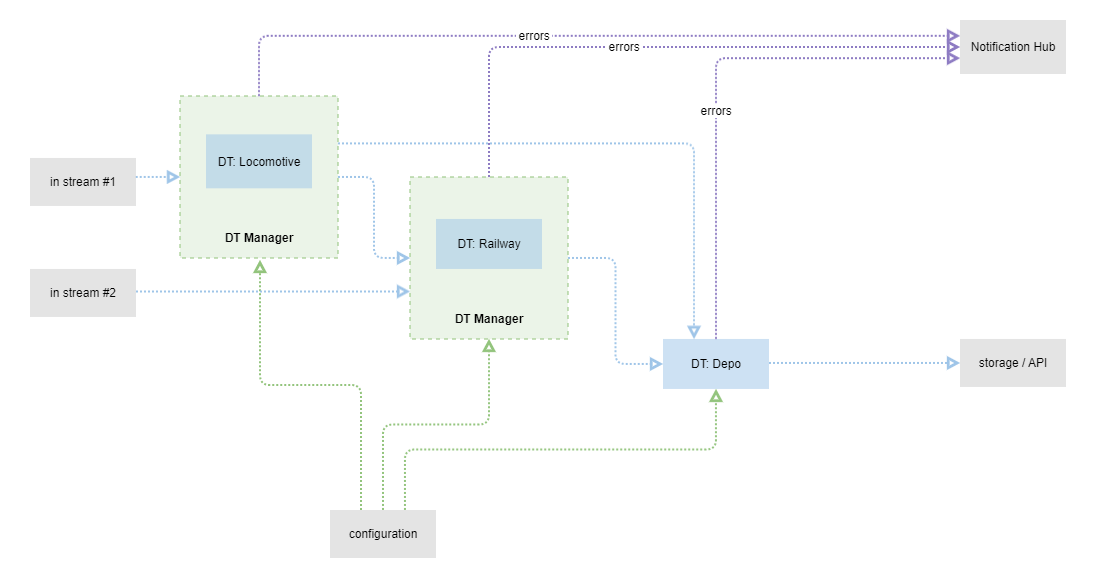Digital twins: implementationPermalink
Let us dive deeper into Digital Twins implementation. The way I see 3 big classes of Digital Twins is described here. First, we will look at types of basic building blocks we need to implement Digital Twins in IIoT solution
- digital twin instance implementation extension
- management extension for digital twin instances
- data flows
Then we take a look at 2 projects and how these blocks can help solve real life scenarios.
Base Digital TwinsPermalink
Goal is to extend (adopt?) model for simpler yet more powerful tool to model digital twins.
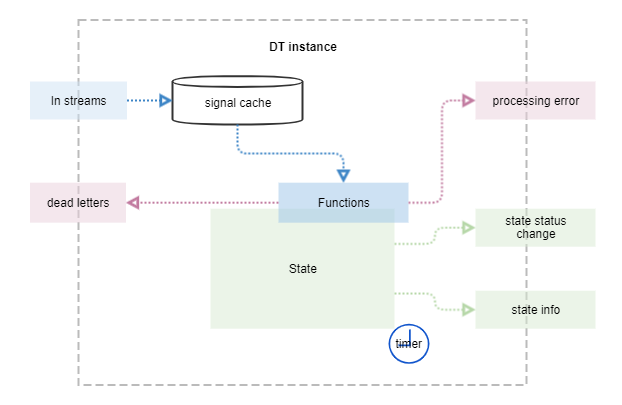
Types of blocks
- Devices/sensor level
- Camera, ble/uwb anchor etc
- Simple (on/off) or more complicated state-machine
- Sending live state data every 1 second/minute etc
- Algorithmic Estimator
- Classical deterministic or neural nets algorithm to estimate internal state of the object or process
- Probabilistic estimator
- For example estimating BLE asset tag
- Telemetry as input
- Particle filter
- Keeps prob-distribution as a internal state
- Outputs – best/mean/distribution
- Aggregator
- Combine 2 or more streams of potentially different frequency and latency into one
- System estimator
- Inputs are from estimators
- Conflict re-solving
Management extensionPermalink
Management block (or extension) is used when we have more than one DT of the same type and one data flow that needs to be separated into several (one for each DT) according to some rule.
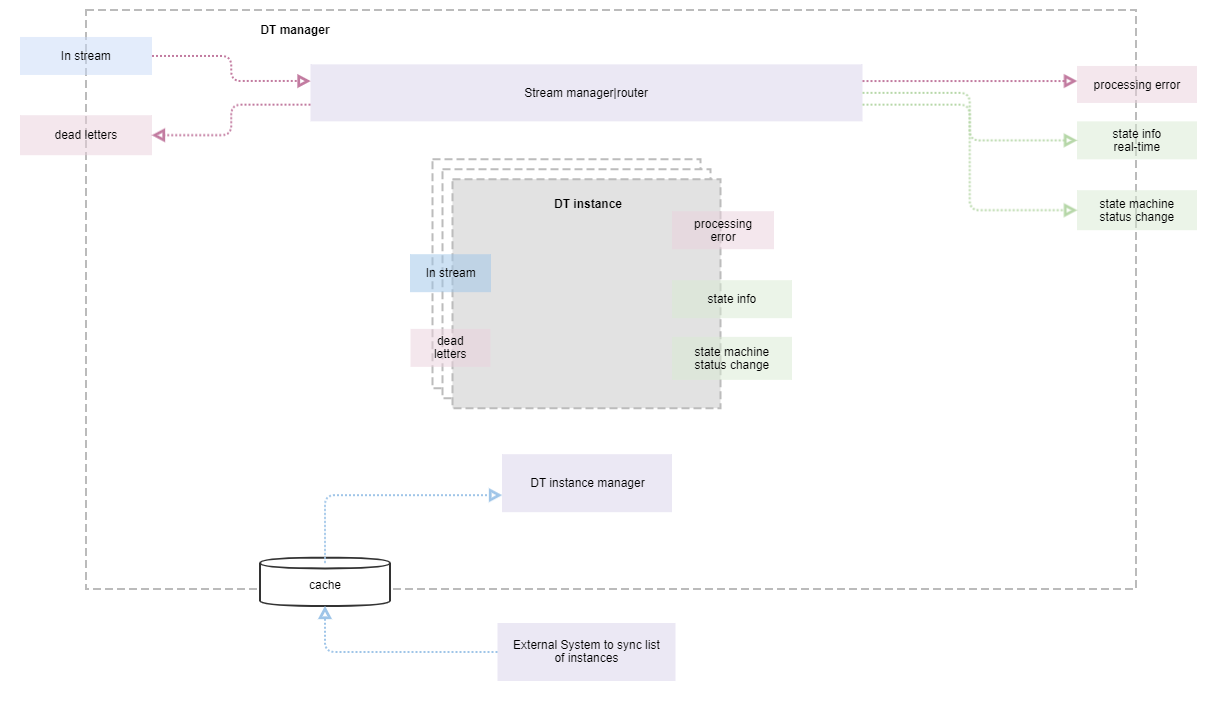
Data FlowsPermalink
We have 4 data flow types
- Telemetry from IoT devices
- State and State Estimations from Digital Twins
- Events (like errors)
- Configuration and sync business data
Example #1. RTLSPermalink
- Remote site with ‘thin connection’ to cloud
- RTLS BLE-based infrastructure that produce ~10Mb sec IIoT data streams
- On-site RTLS server that estimates location of BLE tags
- Smartphones are part of solution and produce 2 data flows – real-time BLE-tag info and periodical GPS based location
- In cloud all data is aggregated using information from MES that provides employee-smartphone relation
Simplified schema of main blocks of RTLS solution
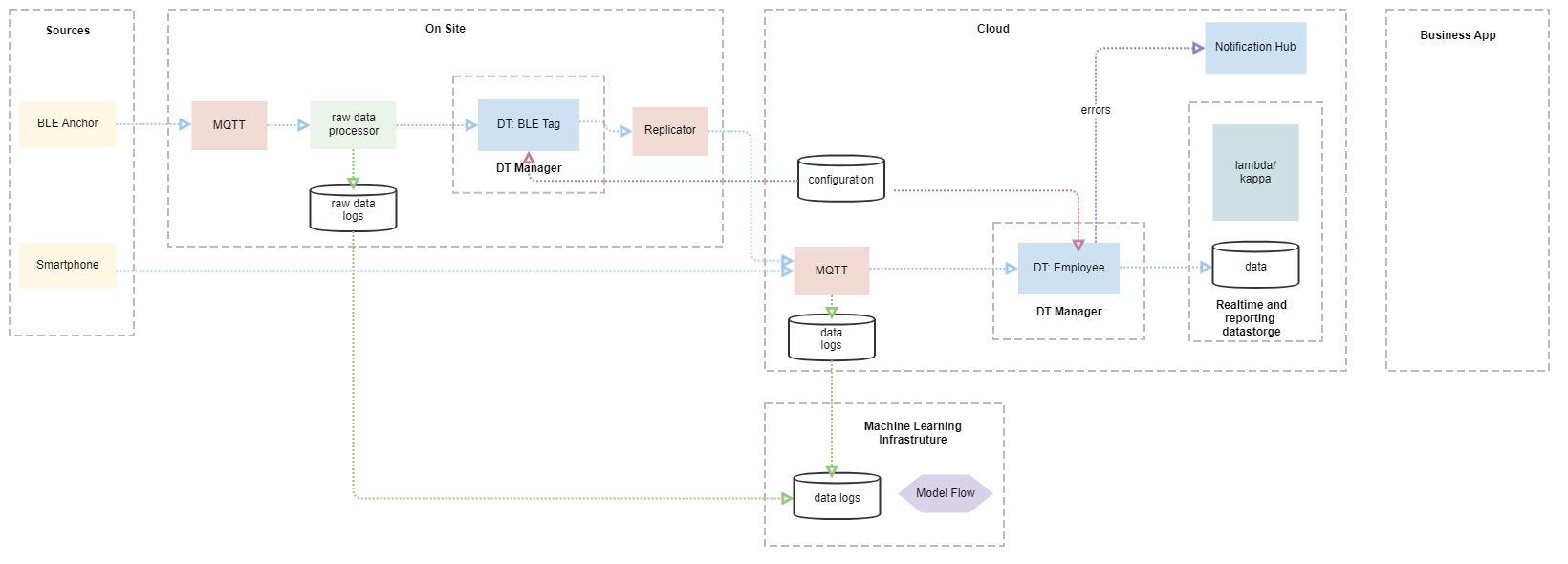
DT ManagersPermalink
Digital Twins part that contains
- DT manager for BLE-Tag Twin
- DT-manager for Employee Twin
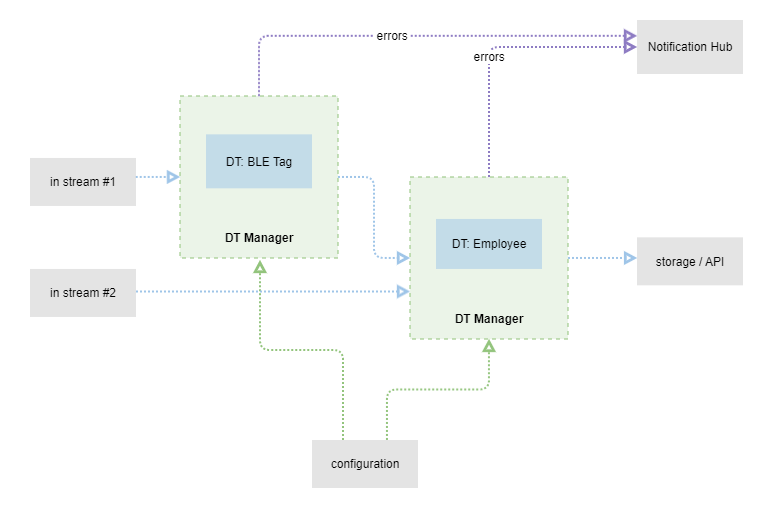
DT BLE TagPermalink
This DT ‘reflects’ real-life object ‘ble tag’.
- Input stream – RSSI signals from BLE Anchors
- Type – probabilistic estimator (particle filter).
- Output – weighted mean estimation
- Internal state – 3D location and on/off-site info
DT EmployeePermalink
This DT ‘reflects’ real-life object ‘employee’ that has smartphone (emulates BLE Tag for indoor positioning and periodically sends GPS location for outdoor positioning)
- 2 input streams: 3D location estimation from ‘DT:BLE Tag’ and GPS signals
- Type – aggregator – combines location information from sources of different periodicity into ‘global location’ info
- Output - ‘global location’ info
Example #2. Video processingPermalink
Project in more details is described here
Overall simplified solution architecture

Digital Twins onlyPermalink
